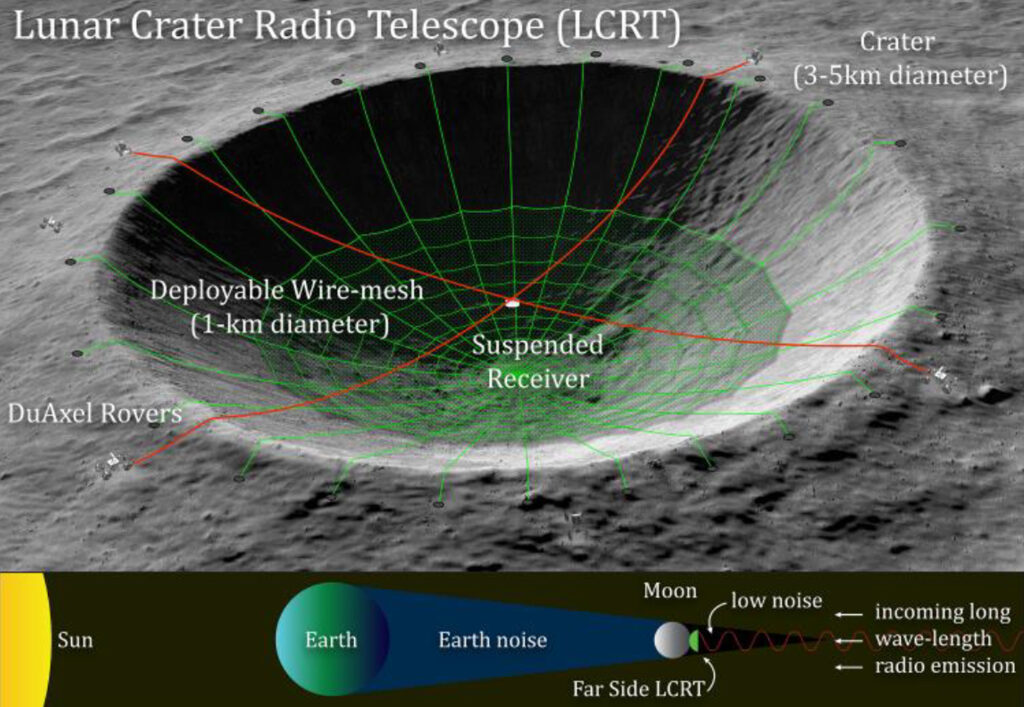NASA just announced grants for its upcoming innovative space projects. An interesting plan in these future projects is to fit a 1-kilometer radio telescope inside a crater on the far side of the Moon.
The Lunar Crater Radio Telescope (LCRT) would be able to measure wavelengths and frequencies that can’t be detected from Earth. We cannot measure a few things because of the ionosphere obstructions and the various other bits of radio noise surrounding our planet.
If the plan and grant money can make this LCRT project a reality, it would become the largest filled-aperture radio telescope in the whole Solar System.
“LCRT could enable tremendous scientific discoveries in the field of cosmology by observing the early universe in the 10–50m wavelength band (6–30MHz frequency band), which has not been explored by humans to date,” writes robotics technologist Saptarshi Bandyopadhyay of the NASA Jet Propulsion Laboratory (JPL).
According to the plans, moon rovers would pull out a wire mesh some 1 kilometer across, inside a lunar crater that can be up to 5 kilometers in diameter. A suspended receiver at the center of the crater would complete the whole radio telescope system.
Everything is planned to be automated and is to be done without any human operators, which would, in turn, mean a lighter and less expensive payload for the project.
We are still at a very early stage of planning, and it’s not yet clear as to which crater would be used for the job, but it’s an amazing concept that we’ll be keeping an eye on in the years ahead.

The biggest radio telescope here on Earth is the Five-hundred-meter Aperture Spherical Telescope or FAST, which has a 500 meter (1,640 foot) diameter is located in China. One the LCRT is built, it would be two times wider than FAST.
FAST has already picked up mysterious fast radio bursts or FRBs from the depths of space proving its worth. NASA hopes that LCRT would pick even more mysterious signals from deep space.
There’s now such an abundance of low Earth orbit satellites and listening to deep space from the surface of earth is becoming increasingly difficult.
Working at a low-frequency range of 6 to 30MHz, the LCRT could perhaps tell us more about the earliest days of the Universe.
China and the Netherlands already have a radio telescope on the far side of the Moon but it is a much smaller one. This telescope uses satellites to relay data back to Earth and LCRT also would do the same thing.
The team behind the concept has nine months and up to 125,000 USD to see if they can develop it further. Let’s hope they’re successful and we detect some secrets of the cosmos.
Source: NASA

